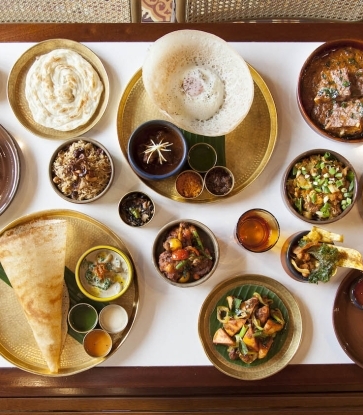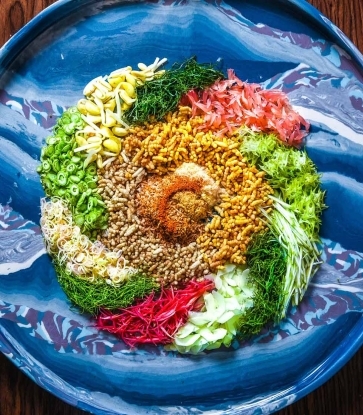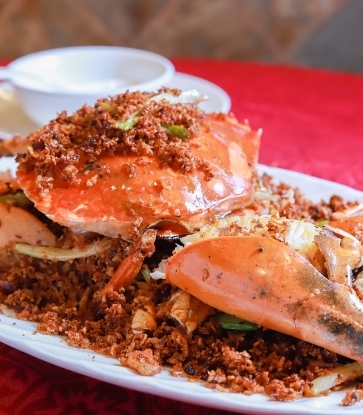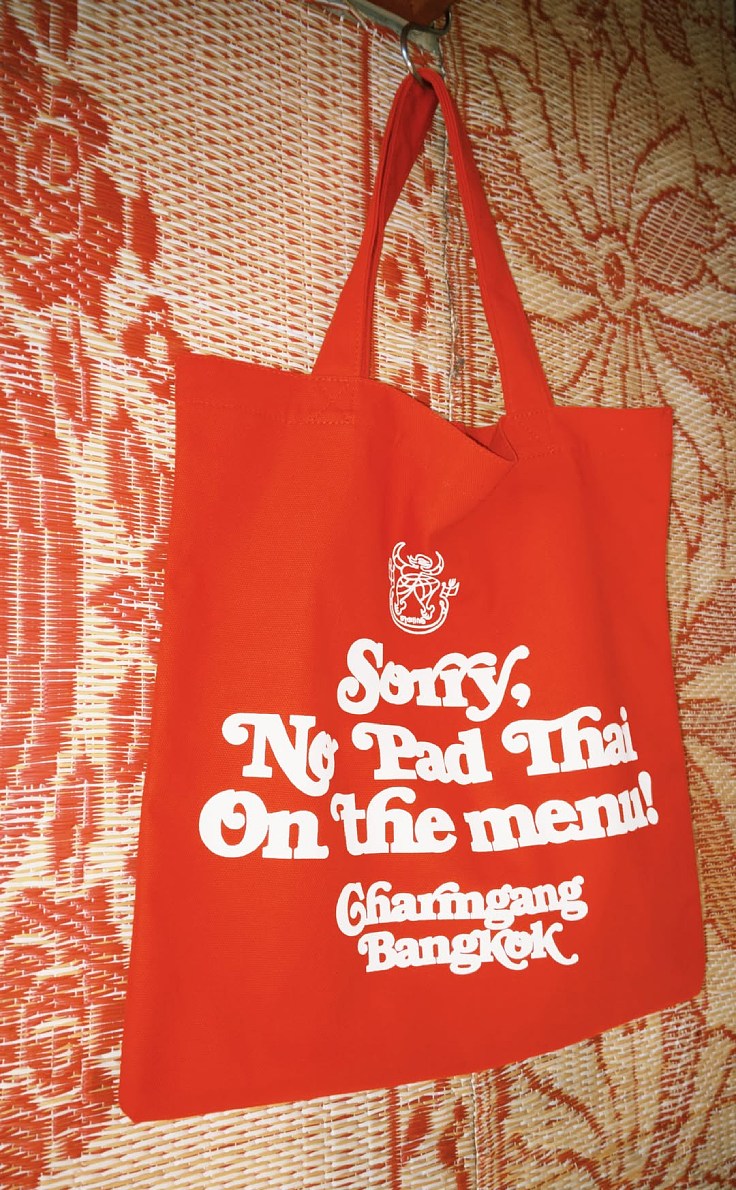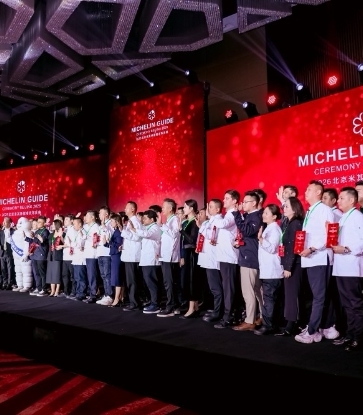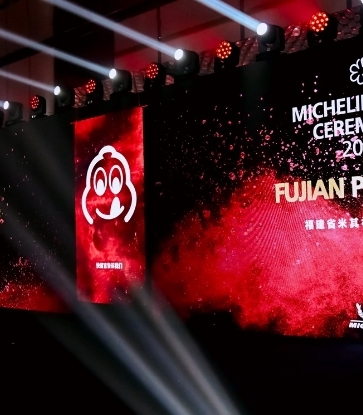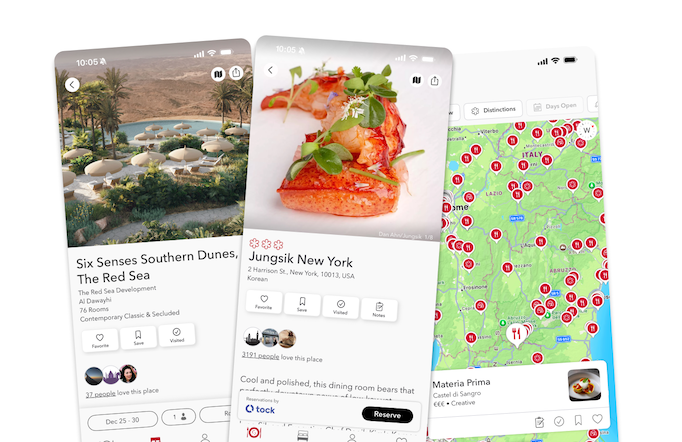In today’s culinary landscape, food and wine pairing has become an integral part of fine dining. However, as people pursue healthier eating habits and cultural experiences, food and tea pairing is emerging as a new favourite in the culinary world. Tea, a beverage steeped in thousands of years of culture, is redefining the taste experience at the dining table with its unique flavours and rich heritage.
RELATED: 5 Must-Order Dishes At Luk Yu Tea House, A MICHELIN Celebration Of Well-Preserved Cantonese Classics

Ms. Gi Na, the head tea sommelier at Lu Shang Lu, a two-MICHELIN-star restaurant in Beijing, has received the Sommelier Award in MICHELIN Guide Beijing 2025 for her exceptional food and tea pairings. Today, we join her in exploring the secrets of this pairing art and experience the perfect balance between tea and cuisine.
Ms. GI believes that the essence of food and tea pairing lies in “balance” and “harmony.” To help food enthusiasts grasp the relationship between tea and food, she shares three golden rules:
Flavour Balance
The flavour of tea should complement the dish. Light teas (such as green and white tea) pair well with delicate dishes (like seafood and salads), while robust teas (like black tea, rock tea, and Pu-erh) are better suited for richer foods (such as red meat and barbecued dishes).

Texture Harmony
The bitterness, sweetness, and aroma of tea should harmonize with the texture of the food. For instance, the mild, rounded flavours of black tea can balance the heaviness of greasy foods, while the sweet and smooth profile of Oolong tea can counteract the spiciness of certain dishes.Regional Pairing
Traditionally, teas from the same region often pair well with local cuisines. For example, China’s Longjing tea pairs beautifully with Jiangsu and Zhejiang cuisine, while Japan’s Sencha goes well with sushi, showcasing classic regional pairings.
Take, for example, the signature dish at Lu Shang Lu restaurant: Sea Cucumber with Ejiao, known for its rich broth and chewy texture. Ms. GI recommends pairing it with ripe Pu-erh tea, whose woody aroma and depth complement the intense sauce, while its cleansing effect perfectly balances the dish’s richness.
RELATED: All About Sea Cucumbers

When pairing tea with caviar and Peking duck (right image), it is essential to consider the duck's complex flavours: from the caviar's freshness to the fatty richness of the duck skin, and the juicy meat. A fragrant cinnamon tea can instantly cut through the greasiness, providing a refreshing taste experience.
The restaurant's seasonal dish, Low-Temperature Scallops with Shrimp Oil and Garlic (image below), features scallops from Shandong’s Changdao, combined with garlic from Cangshan and shrimp oil from Bohai Bay for a burst of flavour. Gina pairs this with Silver Needle White Tea, which enhances the dish without overpowering its original flavours. The tea’s fresh and sweet profile, with floral and peach notes, beautifully complements the sweetness of the scallops, making it a standout on the spring dining table.

Food and tea pairing is not just a sensory delight; it’s a cultural experience. Whether pairing classic dishes or enhancing seasonal delights, tea adds elegance and depth to the dining table.
Tips: A brief guide of Chinese Tea
To help tea lovers better understand the diversity of tea, Ms. GI shares a concise guide to Chinese tea varieties:
Green Tea
Unfermented, with a fresh aroma (like floral, nutty, and bean notes) and a refreshing taste. Notable examples include Longjing and Biluochun. Brew at 85°-90°C, avoiding steeping for too long.
Black Tea
Fully fermented, offering a variety of aromas (floral, fruity, honey-like) and a rich, sweet taste. Notable examples include Keemun and Dianhong. Brew at 90°-95°C.
Oolong Tea
Semi-fermented, with complex aromas (floral, fruity, woody) and a rich, lingering sweetness. Notable examples include Tieguanyin and Da Hong Pao. Brew at 95°-100°C, with brewing methods varying slightly by region and process.

White Tea
Lightly fermented, with a delicate aroma (floral, fruity) and a fresh taste. Notable examples include Silver Needle and Bai Mudan. Brew at 80°-85°C, avoiding long steeping.
Yellow Tea
Slightly fermented, with a subtle aroma (floral, fruity) and a sweet, smooth taste. Notable examples include Junshan Silver Needle. Brew at 80°-85°C.
Black Tea (Post-fermented)
Dark leaves with a complex aroma (earthy, woody) and a rich, sweet taste. Notable examples include Pu-erh and Anhua Black Tea. Brew at 100°C.



